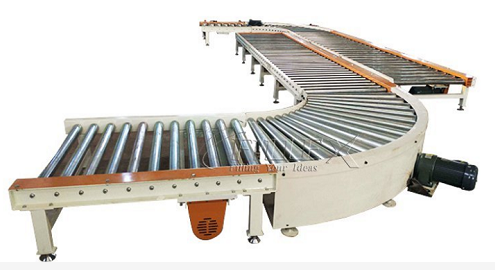- WhatsApp: / 008613773256419
- Email: Jessy@fillex-packer.com
If you are familiar with how the human body functions, then you will agree that at the back end of every human activity is a central nervous system. It controls every motion, blink, sneeze and even the taste on those taste buds of yours.
For operations that receive, handle, store, distribute or manufacture ship products, the conveyor system acts in the exact capacity as the human central nervous system.
But unlike the human nervous system which is automatic, the conveyor system for whatever use needs to be selected appropriately from a wide range of available options and possible configurations.
This task is the most hectic for warehouse managers and others involved directly with the use of the conveyor system.
Apparently, there are two basic considerations to make when looking out for a conveyor system; the process requirements and the product requirements. A good combination of these two delivers optimum results.
For starters, every conveyor system should be able to give you value for your money and time, and this is why you must answer the following questions before settling for a model or specification of a conveyor system.

· Is the conveyor system operationally safe?
· How efficient is the conveyor system in terms of energy consumption?
· What is the operational life span of the parts and the conveyor system as a whole?
· Does the conveyor system, support further adjustments to suit my changing needs?
· How much does it cost to either own or use a conveyor system?
Proper answers to these questions is the first step in the right direction towards selecting an efficient conveyor system.
This step is very crucial because the operational efficiency of the warehouse can be undermined and eventually low customer satisfaction and profits, if the wrong conveyor system is chosen.
There are a few factors to consider when selecting a conveyor system for your operations and it is necessary that we go through them now.
1. Product requirements
I intentionally began this section with the products requirements because; it makes no sense if the conveyor system is all nice and beautiful and yet cannot convey the required products you intended for it.
That would be a total waste of your resources and time. Therefore, the type and quantity of products to be moved by the conveyor system must be clearly known, this is because the design of the conveyor system depends mostly on the type of product it will convey. These questions should guide you;
· What type of product is to be conveyed?
· What is the average weight per foot of product?
· What is the dimensional data for each product?
These basic questions will help you understand the maximum, minimum and net data for the products. Data such as weight, dimensions, orientation etc.
Your decisions will be properly guided if these questions are sorted out. also the size of the conveyor system depends on the space available in your facility or warehouse.
The conveyor size in terms of the width, guide rail specifications and roller centers, while the weight of the products will decide roller gauge, roller diameter and motor sizing requirements.
2. Process requirements
It is not enough to consider the product requirements. You also have to consider the requirements governing the entire conveying process.
The process must be unaltered and free from obstructions on the pathway. To do this, the orientation and size of the product must be clearly known.
The products must be placed in such a way to ease barcode scanning and transfer etc. Transfer speed — short, rapid movement or slow,
3. Flow rate
How many products do you intend to be conveyed per hour (or per minute)? The average transfer rate of your facility should be within the conveyors ability.
These factors will determine the conveyor speed and length. Conveyors are ideal for certain products and such factors must also be considered.
If the products are large boxes, then a chain driven roller conveyor is more appropriate than a plastic chain conveyor. An efficient conveyor system does the work it was designed for.
4. Transfer requirements
The point where items are transferred to and from the conveyor is a critical one. Most conveyors use side to side transfers, powered transfers, dead plates, gravity rollers, etc. to facilitate this.
Products with a smaller footprint may require a powered transfer, while larger and longer products may need gravity rollers.
Partner with us for the best conveyor system
Product movement within a production facility is very key to the overall success of the establish. For this reason, we are sold out to designing and manufacturing the best type of conveyor system that fits our customers’ process and production requirement.
For more information on our products and services, kindly click here to contact us, and we’ll be glad to work with you.